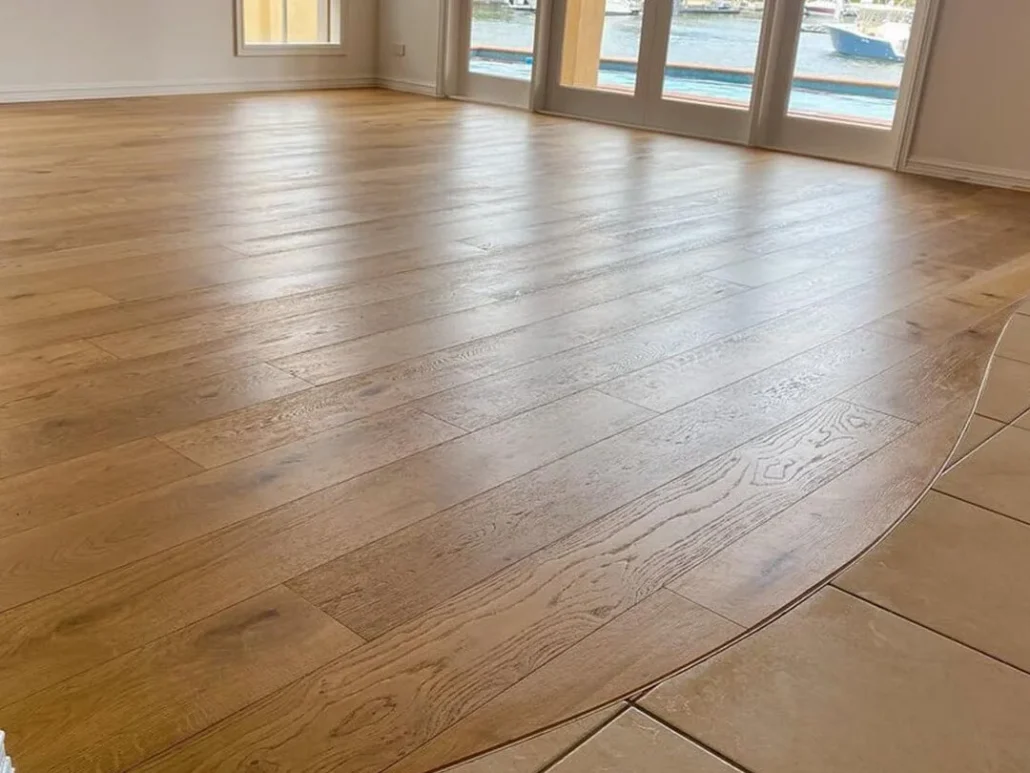Easy Steps: How To Protect Walls When Sanding Floors
So you’ve decided to tackle sanding your floors—good on you for taking on the challenge!
But wait—what about your walls? We know you don’t want to end up with a mess that’ll take ages to clean up.
When it comes time to refinish floors, there’s a dreaded side effect: the mess! DIY floor sanding Melbourne task can unleash a flurry of dust, threatening to coat every wall in your space.
But fear not, we’ve got your back. In this guide, we’ll dive into easy steps to protect your precious walls from dust while you bring those floors back to their former glory.
So, grab your tools and let’s safeguard those walls.
Importance of Wall Protection During Floor Sanding
When you decide to tackle a floor sanding project, remember that your walls need just as much attention as your floors. This might seem like an additional step, but it’s absolutely necessary to ensure a smooth renovation process.
Let’s delve into why protecting your walls should be a priority and not an afterthought.
Potential Damage to Walls
Sanding floors is a messy job that creates a lot of dust and small bits of debris. Unfortunately, this mess doesn’t just stay on the floor.
If you’re not careful, the tiny dust particles can stick to your walls. This can make your walls look dirty or even change their colour. Also, the equipment used to sand floors is usually big and awkward to use.
While you’re trying to work with these machines, it’s pretty easy to hit and damage your walls accidentally. This means you might end up having to do extra work, like fixing and painting your walls, on top of refinishing your floors.

Need for Protective Measures
Protective measures are essential to save yourself from additional work and expenses. By safeguarding your walls, you maintain the integrity of your space and avoid the hassle of post-project cleanups or repairs.
It’s about being proactive rather than reactive, ensuring that you’re simply admiring your newly refinished floors at the end of your sanding project instead of fretting over wall damage.
Preparing Your Space Before Sanding
Getting ready for a sanding project is not just about having the right tools. It’s also important to set up your room in a way that helps prevent any harm to the rest of your house.
Here’s how you can effectively prepare your space.
Clearing the Room
The first step in preparing your space is to remove as much from the room as possible. This includes furniture, rugs, curtains, and any hanging décor.
Not only does this provide you with the space needed to freely maneuver the sanding equipment, but it also protects your belongings from dust and potential damage.
If there are fixtures or heavy items that cannot be moved, consider covering them with plastic sheets or drop cloths to shield them from the dust storm to come.
– Remove all movable items from the room.
– Cover heavy or fixed items with protective sheeting.
– Ensure all electronic devices are safely stored away from the workspace.
Taping Off Areas
Once your room is cleared, the next vital step is taping off areas you want to protect. This means sealing off doorways, vents, and any other openings with plastic sheeting and painter’s tape to prevent the spread of dust to other parts of your home.
It’s also a smart idea to tape plastic sheeting over any built-in cabinets or fixtures to protect them from dust and accidental scuff marks.
When taping, ensure a tight seal so that dust doesn’t sneak through gaps. This step is particularly important if you have an HVAC system that could circulate dust throughout your house.
By taping off vents, you prevent the system from sucking in the dust and spreading it, which could lead to longer cleaning times and potentially impact your home’s air quality.
– Use plastic sheeting and painter’s tape to seal off the room.
– Cover doorways, vents, and other openings tightly to prevent dust spread.
– Protect built-in elements with plastic sheeting to avoid damage during sanding.
Taking the time to protect your walls and prepare your space can make a significant difference in the outcome of your floor sanding project. This setup gives you enough room to move the sanding machines around easily. Plus, it keeps your stuff safe from all the dust and possible damage.
If there are big items or fixtures you can’t move, you can cover them with plastic sheets or cloths to keep them dust-free during your project.
Using Protective Materials
When diving into a floor sanding project, protecting your walls should be at the top of your checklist. Thankfully, several simple, budget-friendly materials can help shield your walls from dust, scuffs, and accidental damage.
Let’s explore the best options.
Drop Cloths
Drop cloths are a go-to for many DIY enthusiasts and professionals alike regarding wall and floor protection. They’re particularly handy for catching any stray dust or debris that escapes during the sanding process.
For the best results, opt for heavy-duty canvas drop cloths. Unlike plastic, they won’t tear easily or slip under your feet, offering a safer working environment. Plus, they’re washable and reusable, making them a greener and more cost-effective choice in the long run.
Plastic Sheeting
Plastic sheeting, also called painter’s plastic, acts like a strong wall that keeps out all the tiny dust particles created by sanding, which tend to spread everywhere.
Stick this plastic to your walls with painter’s tape at the top edge, making sure to cover any electrical outlets and light switches, too. This extra step helps protect them.
It’s lightweight and inexpensive, making it a popular choice. However, note that it can be slippery on floors, so secure it properly and consider layering it over a drop cloth for added security.
Cardboard
Cardboard is another great, often underutilised option for protecting walls during floor sanding. Large pieces can be used to shield the lower parts of walls from accidental bumps with the sander.
They’re especially useful near doorways or tight corners where the risks of scuffs and knocks are higher.
Cardboard is not only inexpensive but also easily sourced and recyclable. Fasten cardboard sheets in place with painter’s tape for easy removal that won’t damage your paint or wallpaper.
Additional Tips for Wall Protection
Beyond the obvious physical barriers, here are a few more strategies to keep your walls looking pristine during a floor sanding project.
Removing Light Fixtures and Decor
Before sanding begins, take a walk around the room and remove any wall-mounted light fixtures, photos, mirrors, and decorative items. This step not only protects these items from damage and dust but also reduces obstacles, allowing for a smoother sanding process.
Store them in a safe place until the project is completed. Remember to cover exposed wiring with a protective cap or tape to prevent dust infiltration, which could cause damage or become a safety hazard.
Communicating with Contractors
If you’re hiring a floor sanding Melbourne professional to sand your floors, clear communication is key to ensuring the protection of your walls.
Discuss your expectations regarding wall protection and cleanup before the work starts. Many contractors will have standard practices in place, but expressing your concerns will ensure they pay extra attention to safeguarding your home.
Also, inquire about the equipment they use; tools with better dust collection systems can considerably lessen the mess.
Regular Inspections
Whether you’re doing the job yourself or hiring out, regular inspections are crucial. Take time each day to assess the condition of your walls, looking for any potential damage or areas where protective materials may have shifted or been compromised.
Early detection means you can address issues promptly, avoiding harder-to-fix problems down the line. This is also an excellent time to check for dust leakage and ensure your dust containment measures are still effective.
Remember, while floor sanding can transform the look of your home, it shouldn’t come at the cost of your walls.
Using protective materials like drop cloths, plastic sheeting, and cardboard, along with some additional thoughtful preparations, can keep your walls safe and ensure a cleaner, smoother renovation process.
Wrapping Up!
Protecting your walls while engaging in floor sanding requires attention to detail.
From covering your walls with plastic sheeting to taping edges and ensuring your sanding tools are correctly used, each step contributes significantly to keeping your walls pristine.
Remember, the key is to prepare thoroughly before diving into your project.
For professional floor sanding Melbourne services that prioritise both your floors and walls, consider hiring a Total Floor Service.
Our skilled professionals ensure your floors look their best while keeping your walls untouched. Trust Total Floor Service to elevate your space with our exceptional floor sanding services.



 Address:
Address:  Phone:
Phone:  ABN: 63 602 512 489
ABN: 63 602 512 489




